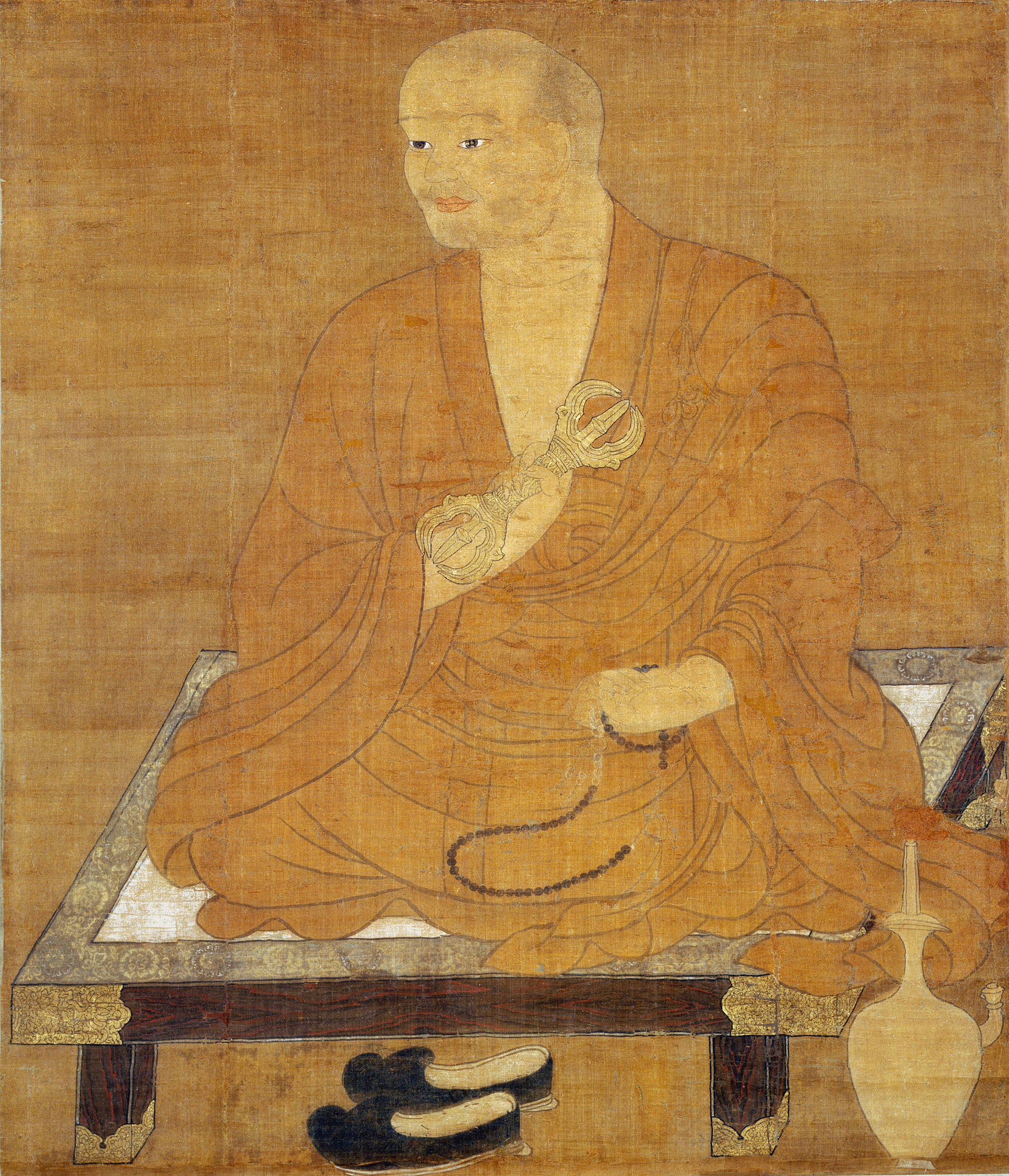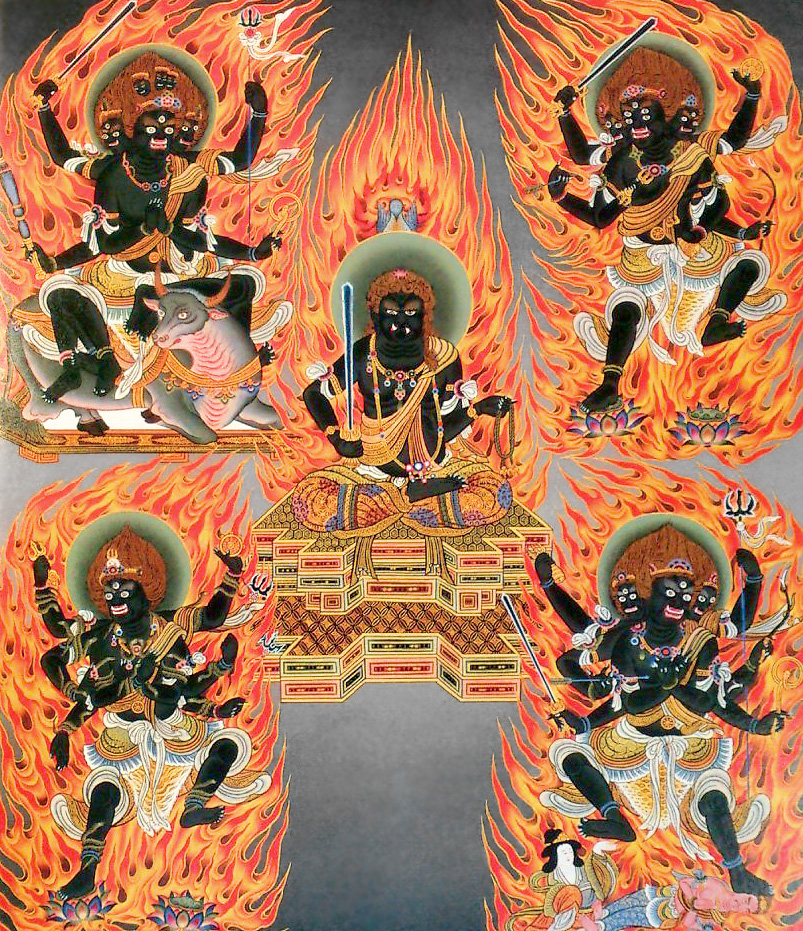|
Daishō-ji (Inuyama)
Daishō-ji (); full name Daihonzan Naritasan Nagoya Betsuin Daishō-ji (), also known as Inuyama Naritasan Temple (), is a Shingon Buddhist temple located in Inuyama, Aichi Prefecture, Japan. It is a branch of the famous Naritasan Shinshō-ji in Chiba and is known for its striking red architecture, panoramic views, and blessings for traffic safety. The principal image of this temple is Acala or Achala (, "The Immovable", ), also known as (, "Immovable Lord") or (, "Noble Immovable Lord"), is a Fierce deities, wrathful deity and ''dharmapala'' (protector of the Dharma) prominent in Vajrayana, Vajrayana Buddhism and East Asian Budd .... Gallery File:Shinsei Daibutsu in Inuyama Naritasan - 1.jpg, Buddha statue File:The_main_temple_of_Inuyama_Naritasan.jpg, Main temple File:Fire_&_sword_object_in_Inuyama_Naritasan.jpg, Fire and sword statue See also * References {{Authority control Shingon Buddhism Buddhist temples in Aichi Prefecture Tourist attractions in Aichi ... [...More Info...] [...Related Items...] OR: [Wikipedia] [Google] [Baidu] |
Shingon
is one of the major schools of Buddhism in Japan and one of the few surviving Vajrayana lineages in East Asian Buddhism. It is a form of Japanese Esoteric Buddhism and is sometimes called "Tōmitsu" (東密 lit. "Esoteric [Buddhism] of Tō-ji"). The word ''shingon'' is the Kan-on, Japanese reading of the Traditional Chinese characters, Chinese word ('), which is the translation of the Sanskrit word mantra. The Chinese Esoteric Buddhism, Zhēnyán lineage was founded in China (c. 7th–8th centuries) by Indian Vajracharya, vajrācāryas (esoteric masters) like Śubhakarasiṃha, Vajrabodhi and Amoghavajra. These esoteric teachings would later flourish in Japan under the auspices of a Buddhist monk named Kūkai (, 774–835), who traveled to Tang dynasty, Tang China and received these esoteric transmissions from a Chinese master named Huiguo (746–805). Kūkai established his tradition at Mount Kōya (in Wakayama Prefecture), which remains the central pilgrimage center of Sh ... [...More Info...] [...Related Items...] OR: [Wikipedia] [Google] [Baidu] |
Aichi Prefecture
is a Prefectures of Japan, prefecture of Japan located in the Chūbu region of Honshū. Aichi Prefecture has a population of 7,461,111 () and a geographic area of with a population density of . Aichi Prefecture borders Mie Prefecture to the west, Gifu Prefecture and Nagano Prefecture to the north, and Shizuoka Prefecture to the east. Nagoya is the capital and largest city of the prefecture. Overview Nagoya is the capital and largest city of Aichi Prefecture, and the Largest cities in Japan by population by decade, fourth-largest city in Japan. Other major cities include Toyota, Aichi, Toyota, Okazaki, Aichi, Okazaki, and Ichinomiya, Aichi, Ichinomiya. Aichi Prefecture and Nagoya form the core of the Chūkyō metropolitan area, the List of metropolitan areas in Japan, third-largest metropolitan area in Japan and one of the largest metropolitan areas in the world. Aichi Prefecture is located on Japan's Pacific Ocean coast and forms part of the Tōkai region, a subregion of the ... [...More Info...] [...Related Items...] OR: [Wikipedia] [Google] [Baidu] |
Japan
Japan is an island country in East Asia. Located in the Pacific Ocean off the northeast coast of the Asia, Asian mainland, it is bordered on the west by the Sea of Japan and extends from the Sea of Okhotsk in the north to the East China Sea in the south. The Japanese archipelago consists of four major islands—Hokkaido, Honshu, Shikoku, and Kyushu—and List of islands of Japan, thousands of smaller islands, covering . Japan has a population of over 123 million as of 2025, making it the List of countries and dependencies by population, eleventh-most populous country. The capital of Japan and List of cities in Japan, its largest city is Tokyo; the Greater Tokyo Area is the List of largest cities, largest metropolitan area in the world, with more than 37 million inhabitants as of 2024. Japan is divided into 47 Prefectures of Japan, administrative prefectures and List of regions of Japan, eight traditional regions. About three-quarters of Geography of Japan, the countr ... [...More Info...] [...Related Items...] OR: [Wikipedia] [Google] [Baidu] |
Shingon Buddhism
is one of the major schools of Buddhism in Japan and one of the few surviving Vajrayana lineages in East Asian Buddhism. It is a form of Japanese Esoteric Buddhism and is sometimes called "Tōmitsu" (東密 lit. "Esoteric uddhismof Tō-ji"). The word ''shingon'' is the Japanese reading of the Chinese word ('), which is the translation of the Sanskrit word mantra. The Zhēnyán lineage was founded in China (c. 7th–8th centuries) by Indian vajrācāryas (esoteric masters) like Śubhakarasiṃha, Vajrabodhi and Amoghavajra. These esoteric teachings would later flourish in Japan under the auspices of a Buddhist monk named Kūkai (, 774–835), who traveled to Tang China and received these esoteric transmissions from a Chinese master named Huiguo (746–805). Kūkai established his tradition at Mount Kōya (in Wakayama Prefecture), which remains the central pilgrimage center of Shingon Buddhism. The practice of the Shingon school stresses that one is able to atta ... [...More Info...] [...Related Items...] OR: [Wikipedia] [Google] [Baidu] |
Inuyama, Aichi
is a city in Aichi Prefecture, Japan. , the city had an estimated population of 73,420 in 31,276 households, and a population density of 980 persons per km2. The total area of the city is . The name of the city literally translates to "Dog Mountain". The name appears in historical records from 1336, but its origin is unknown. Geography Inuyama lies along the northwestern edge of Aichi Prefecture, separated from neighboring Gifu Prefecture by the Kiso River. Climate The city has a climate characterized by hot and humid summers, and relatively mild winters (Köppen climate classification ''Cfa''). The average annual temperature in Inuyama is 15.1 °C. The average annual rainfall is 1910 mm with September as the wettest month. The temperatures are highest on average in August, at around 27.6 °C, and lowest in January, at around 3.4 °C. Demographics Per Japanese census data, the population of Inuyama has been increasing over the past 70 years. Surroundi ... [...More Info...] [...Related Items...] OR: [Wikipedia] [Google] [Baidu] |
Narita-san
Narita-san (成田山 "Narita mountain") Shinshō-ji ( 新勝寺 "New victory temple") is a Shingon Buddhist temple located in central Narita, Chiba, Japan. It was founded in 940 by Kanchō Daisōjō, a disciple of Kōbō Daishi. It is a lead temple in the Chisan branch (Chisan-ha 智山派) of New Shingon (Shingi Shingon 新義真言宗), includes a large complex of buildings and grounds, and is one of the best-known temples in the Kantō region. It is dedicated to Ācala (Japanese: Fudō myōō ("Unmovable Wisdom King")) who is usually depicted holding a sword and rope and surrounded by flames. Often called a fire god, he is associated with fire rituals. Founding The temple was established in 940 to commemorate the victory of the forces dispatched from the Heian capital to suppress a revolt by the powerful Kantō region samurai, Taira no Masakado. The Shingon priest Kanchō accompanied the force, bringing with him an image of Acala from the Gomadō (Fire Offering Hall) o ... [...More Info...] [...Related Items...] OR: [Wikipedia] [Google] [Baidu] |
Chiba Prefecture
is a Prefectures of Japan, prefecture of Japan located in the Kantō region of Honshu. Chiba Prefecture has a population of 6,278,060 (1 June 2019) and has a geographic area of . Chiba Prefecture borders Ibaraki Prefecture to the north, Saitama Prefecture to the northwest, and Tokyo to the west. Chiba (city), Chiba is the capital and largest city of Chiba Prefecture, with other major cities including Funabashi, Matsudo, Ichikawa, Chiba, Ichikawa and Kashiwa. Chiba Prefecture is located on Japan's eastern Pacific Ocean, Pacific coast to the east of Tokyo, and is part of the Greater Tokyo Area, the most populous metropolitan area in the world. Chiba Prefecture largely consists of the Bōsō Peninsula, which encloses the eastern side of Tokyo Bay and separates it from Kanagawa Prefecture. Chiba Prefecture is home to Narita International Airport, the Tokyo Disney Resort, and the Keiyō Industrial Zone. Etymology The name of Chiba Prefecture in Japanese is formed from two kanji char ... [...More Info...] [...Related Items...] OR: [Wikipedia] [Google] [Baidu] |
Acala
or Achala (, "The Immovable", ), also known as (, "Immovable Lord") or (, "Noble Immovable Lord"), is a Fierce deities, wrathful deity and ''dharmapala'' (protector of the Dharma) prominent in Vajrayana, Vajrayana Buddhism and East Asian Buddhism., Jp. rel. dict., pp. 242–246 Originally a minor deity described as a messenger or acolyte of the Buddhahood, buddha Vairocana, Acala later rose to prominence as an object of veneration in his own right as a remover of obstacles and destroyer of evil, eventually becoming seen as the wrathful manifestation of either Vairocana, the buddha Akshobhya, Akṣobhya, or the bodhisattva Manjushri, Mañjuśrī. In later texts, he is also called (, "Violent Wrathful One", ) or (, "Violent One of Great Wrath", ), the names by which he is more commonly known in countries like Nepal and Tibet. In East Asian Buddhism, East Asian Chinese Esoteric Buddhism, esoteric Buddhism, Acala is classed among the Wisdom Kings () and is preeminent among the ... [...More Info...] [...Related Items...] OR: [Wikipedia] [Google] [Baidu] |
Buddhist Temples In Aichi Prefecture
Buddhism, also known as Buddhadharma and Dharmavinaya, is an Indian religion and philosophical tradition based on teachings attributed to the Buddha, a wandering teacher who lived in the 6th or 5th century BCE. It is the world's fourth-largest religion, with about 500 million followers, known as Buddhists, who comprise four percent of the global population. It arose in the eastern Gangetic plain as a movement in the 5th century BCE, and gradually spread throughout much of Asia. Buddhism has subsequently played a major role in Asian culture and spirituality, eventually spreading to the West in the 20th century. According to tradition, the Buddha instructed his followers in a path of development which leads to awakening and full liberation from '' dukkha'' (). He regarded this path as a Middle Way between extremes such as asceticism or sensual indulgence. Teaching that ''dukkha'' arises alongside attachment or clinging, the Buddha advised meditation practices and ethi ... [...More Info...] [...Related Items...] OR: [Wikipedia] [Google] [Baidu] |
Tourist Attractions In Aichi Prefecture
Tourism is travel for pleasure, and the commercial activity of providing and supporting such travel. UN Tourism defines tourism more generally, in terms which go "beyond the common perception of tourism as being limited to holiday activity only", as people "travelling to and staying in places outside their usual environment for not more than one consecutive year for leisure and not less than 24 hours, business and other purposes". Tourism can be domestic (within the traveller's own country) or international. International tourism has both incoming and outgoing implications on a country's balance of payments. Between the second half of 2008 and the end of 2009, tourism numbers declined due to a severe economic slowdown (see Great Recession) and the outbreak of the 2009 H1N1 influenza virus. These numbers, however, recovered until the COVID-19 pandemic put an abrupt end to the growth. The United Nations World Tourism Organization has estimated that global international tourist a ... [...More Info...] [...Related Items...] OR: [Wikipedia] [Google] [Baidu] |






